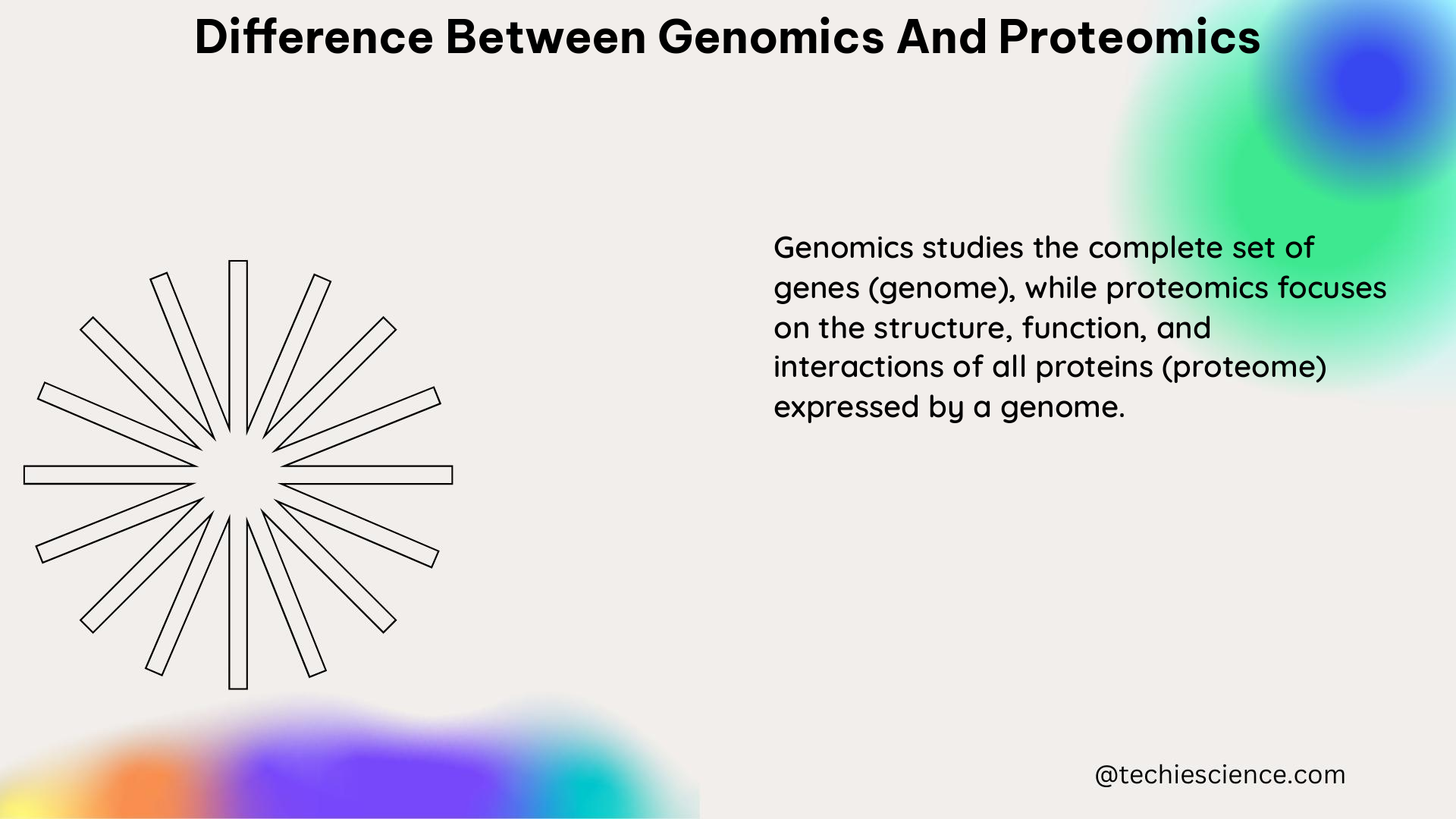Genomics and proteomics are two distinct yet complementary fields of study that provide invaluable insights into the complex mechanisms underlying biological systems. While genomics focuses on the analysis of the genetic blueprint, proteomics delves into the dynamic landscape of proteins, the functional units that drive cellular processes. Understanding the key differences between these disciplines is crucial for researchers, clinicians, and students alike.
Scope and Scale: From Genes to Proteins
The human genome, the complete set of genetic instructions encoded in DNA, contains approximately 20,000-25,000 protein-coding genes. However, the human proteome, the collection of all proteins expressed in the body, is estimated to exceed 1 million unique proteins. This vast disparity in scale highlights the inherent complexity of the proteome, which arises from various biological processes such as alternative splicing, epigenetic modifications, and post-translational modifications (PTMs).
Complexity and Dynamism: The Proteome’s Multifaceted Nature

The proteome is far more complex than the genome due to the intricate interplay of these biological processes. Alternative splicing, for instance, allows a single gene to produce multiple protein isoforms, each with distinct structures and functions. Epigenetic modifications, such as DNA methylation and histone acetylation, can regulate gene expression and, consequently, protein synthesis. Furthermore, PTMs, including phosphorylation, glycosylation, and acetylation, can alter the structure, stability, and activity of proteins, adding an additional layer of complexity to the proteome.
Abundance and Regulation: Navigating the Proteome’s Dynamic Range
The concentration of proteins within a cell can vary significantly, ranging from highly abundant proteins present in thousands to millions of copies per cell to rare proteins present in only a few copies. This wide dynamic range of protein abundance is in contrast to the generally lower and less variable concentrations of mRNA transcripts. Additionally, protein expression and activity can be regulated in a temporal and spatial manner, depending on the cell type, developmental stage, or environmental conditions. This dynamic regulation of the proteome is crucial for understanding cellular function and adaptation.
Ethical Considerations: Navigating the Challenges of Proteomics Data
The increasing availability of high-throughput proteomics data has introduced new ethical challenges related to data privacy and the re-identifiability of participants. Proteomics data represents a level of information that lies between the genotype and the phenotype, posing dilemmas regarding publicly available data, anonymization, ownership of information, and the potential for incidental findings. Researchers and policymakers must navigate these complex issues to ensure the responsible and ethical use of proteomics data.
Complementary Perspectives: Integrating Genomics and Proteomics
While genomics provides a blueprint of the genetic material in a biological sample, proteomics captures the dynamic and functional aspects of cellular processes. These two disciplines are highly complementary, as changes in the genome can influence the proteome, and alterations in the proteome can, in turn, affect cellular function and phenotype. By integrating genomic and proteomic data, researchers can gain a more comprehensive understanding of biological systems, paving the way for advancements in personalized medicine, drug discovery, and our overall understanding of life.
Conclusion
In conclusion, the fundamental differences between genomics and proteomics lie in their scope, complexity, dynamic range, and ethical considerations. Genomics focuses on the genetic blueprint, while proteomics delves into the intricate world of proteins, the functional units that drive cellular processes. By understanding these distinctions, researchers, clinicians, and students can leverage the complementary nature of these disciplines to unlock the secrets of life and drive scientific progress.
References:
- Genomics, Proteomics, and the Changing Research Environment. National Center for Biotechnology Information. https://www.ncbi.nlm.nih.gov/books/NBK19861/
- Genomics vs. proteomics: Two complementary perspectives on life. Nautilus Biotechnology. https://www.nautilus.bio/blog/genomics-vs-proteomics-two-complementary-perspectives-on-life/
- Beyond Genes: Re-Identifiability of Proteomic Data and Its Implications for Personalized Medicine. National Center for Biotechnology Information. https://www.ncbi.nlm.nih.gov/pmc/articles/PMC6770961/
- The Human Proteome: A Scientific Opportunity for Transforming Diagnostics, Therapeutics, and Safety Assessment. National Center for Biotechnology Information. https://www.ncbi.nlm.nih.gov/pmc/articles/PMC4975403/
- Proteomics: The Move to Personalized Medicine. National Center for Biotechnology Information. https://www.ncbi.nlm.nih.gov/pmc/articles/PMC6770961/

I am Abdullah Arsalan , Completed my PhD in Biotechnology. I have 7 years of research experience. I have published 6 papers so far in the journals of international repute with an average impact factor of 4.5 and few more are in consideration. I have presented research papers in various national and international conferences. My subject area of interest is biotechnology and biochemistry with special emphasis on Protein chemistry, enzymology, immunology, biophysical techniques and molecular biology.